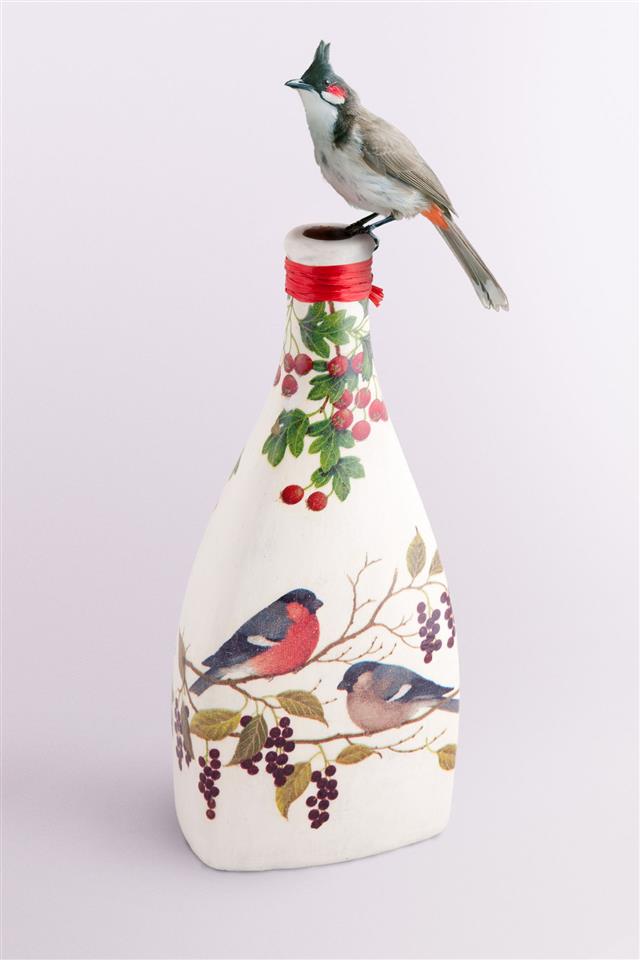
Although antique bottles make a magnificent addition to your home décor, cleaning them can be an utter nightmare! HomeQuicks gives you information on how to clean glass antique bottles at home.
What You Should Avoid
- Avoid using steel wool to scrub the glass as it might scratch with surface of the glass.
- Although many people suggest this, but avoid filling the bottle with BBs as it may damage the glass; use rice or coarse sand instead.
Imagine some gorgeous colorful bottles containing decorative fairy lights, or a brilliant blue-colored bottle with a candle in it gracing your dining table. Sounds pretty, doesn’t it? Vintage bottles can make for some very creative and chic décor options, and at the same time not burn a hole through your pocket.
If you’re on a mission to create your antique bottle decor or may be you want to salvage a long-lost family heirloom, we might suggest that you leave the restoration or the antique bottles to the professionals as you wouldn’t know if you’ve damaged the bottle in your DIY project.
If the bottle only requires some minor cleaning, then here are some ways you could do it at home.
How to Clean Antique Glass Bottles
Soak ’em
We’d like to suggest the simplest thing first, just soak your antique bottle in water with some detergent for a few good hours, or maybe overnight. That followed by a good scrub should do the trick! If the dirt seems pretty stubborn you could also use a mixture of one part water and one part vinegar, or maybe, 1 part bleach and 12 parts water. Some people add denture cleaning tablets or powder to the water while soaking it. Just ensure that you don’t soak the glassware in water that is too hot or too cold in order to prevent them from cracking.
Use Mild Acids
If your grandmother’s vase that you love has developed these crusty white rims, just soaking it in some soapy water is unfortunately not going to help! These white crusts are called mineral deposits, and the only way you could get rid of these is with the help of some mild acids. Many people soak the glassware in acids like muriatic acid in its dilute form a few hours, or a day, before washing it. This acid can be corrosive to the skin, and its fumes may irritate your eyes, hence it is necessary that you wear rubber gloves and protective eye-wear before pulling off this feat! “Limeaway” is a cleaning product free of such corrosive acids that can remove these deposits easily.
Use Copper
If you’ve managed to dig out a cool bottle from your backyard and are scrubbing it day and night in order to get it squeaky clean, but just can’t seem to get rid of this rust, then scrubbing it with a copper wool or by scraping the glass surface with the help of a piece of copper will surely make it clean.
Unleashing the Power of Potatoes
Cut a raw potato in half and sprinkle some baking power and some coarse salt on its cut surface. Rub the potato with the salt-side on the rust spots. For the inner surfaces, cut the potato a bit smaller, jab a fork on its skin side, sprinkle some salt and some baking soda on its cut side. Now, insert this assembly into the bottle and rub it on the surface to remove the rust spots from the inside.
Getting Rid of Dried Paint
If you’d like to savage some antique ink bottles that have some dried ink on its walls, you could first soak them in soapy water. If this doesn’t help, you could add a bit of nail polish remover or pure alcohol to the bottle, close the lid and keep it for a few hours. You could then drain the colored liquid out and scrub the bottle a bit and rinse. Your bottle will be squeaky clean.
Sometimes, antique bottles may develop white patches on their surface due to the process called etching, where the surface of the glass gets corroded. If you really want to remove these white patches, you may have to take your bottle to a professional tumbler.





